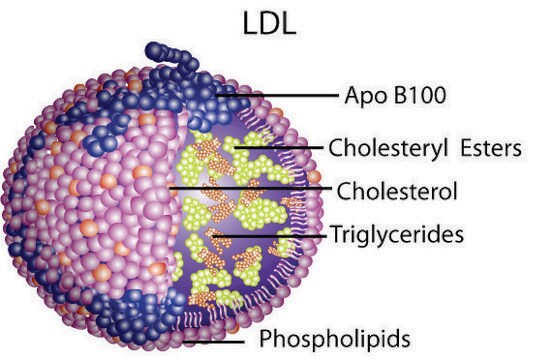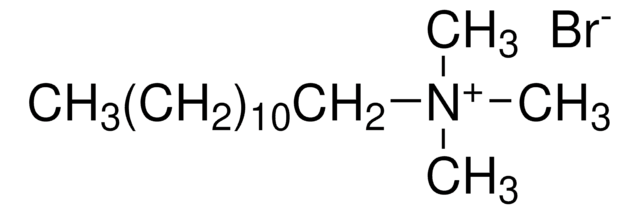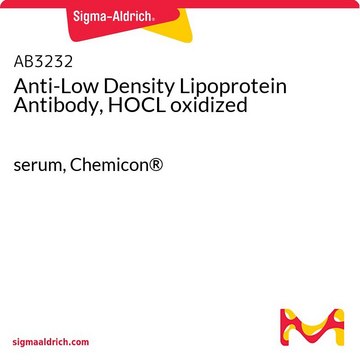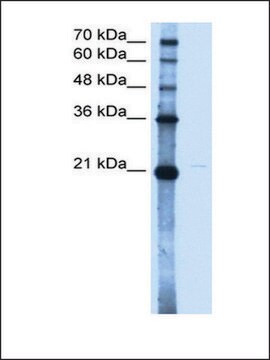L7914
Lipoprotein, low density from human plasma
≥95% (SDS-PAGE), solution
Sinônimo(s):
β-Lipoprotein, LDL, Low density lipoprotein
About This Item
Produtos recomendados
fonte biológica
human plasma
Nível de qualidade
Ensaio
≥95% (SDS-PAGE)
forma
solution
grupo funcional
ester
phospholipid
Condições de expedição
wet ice
temperatura de armazenamento
2-8°C
Informações sobre genes
human ... APOB(338) , APOC2(344) , APOE(348)
Procurando produtos similares? Visita Guia de comparação de produtos
Categorias relacionadas
Aplicação
- as an additive in cholesterol-free RPMI media
- as a component in buffer to perform an assay for measuring lipid peroxidation
- to stimulate hepatic macrophages
- as a plasma protein to determine pazopanib unbound fraction (fu%) by equilibrium dialysis
Ações bioquímicas/fisiológicas
Atenção
propriedades físicas
forma física
Outras notas
Exoneração de responsabilidade
Código de classe de armazenamento
10 - Combustible liquids
Classe de risco de água (WGK)
WGK 3
Ponto de fulgor (°F)
Not applicable
Ponto de fulgor (°C)
Not applicable
Certificados de análise (COA)
Busque Certificados de análise (COA) digitando o Número do Lote do produto. Os números de lote e remessa podem ser encontrados no rótulo de um produto após a palavra “Lot” ou “Batch”.
Já possui este produto?
Encontre a documentação dos produtos que você adquiriu recentemente na biblioteca de documentos.
Os clientes também visualizaram
Artigos
Since cholesterol is a water-insoluble molecule it must be packaged for transport within the plasma. The particles that package cholesterol, cholesteryl esters, and triglycerides for transport, are called lipoproteins.
The potential for the prevention and treatment of cardiovascular disease through increased dietary intake of omega-3 (w-3) fish oils is not a recent scientific discovery.
Nossa equipe de cientistas tem experiência em todas as áreas de pesquisa, incluindo Life Sciences, ciência de materiais, síntese química, cromatografia, química analítica e muitas outras.
Entre em contato com a assistência técnica










